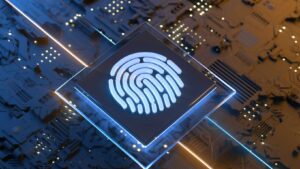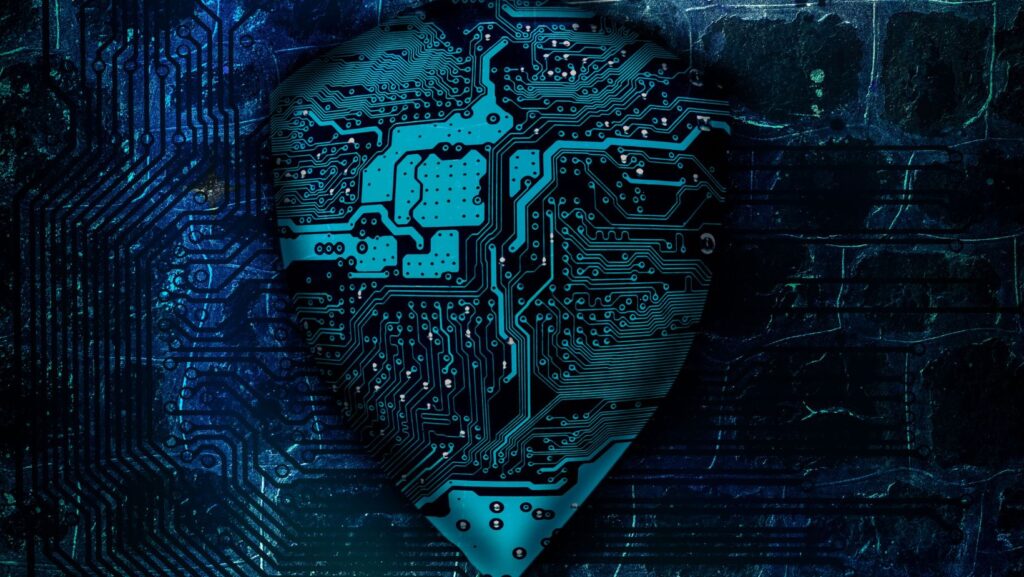In the digital era, cybersecurity has become a paramount concern. It’s no longer a topic exclusive to the IT department; it’s a significant issue that affects everyone, from individuals to corporations, governments to non-profit organizations.
This article will delve into the complex world of cybersecurity, shedding light on its importance in our increasingly connected world. It will explore key concepts, common threats, and effective strategies to safeguard your digital presence. So, whether you’re a tech newbie or an experienced professional, there’s something to gain from understanding cybersecurity.
So, tighten up your digital seatbelts as we navigate the intricate and ever-evolving landscape of cybersecurity.
Understanding Cybersecurity

Countless entities, be it individuals, corporations, or governmental bodies, face potential threats in the digital sphere. Cybersecurity emerges as a prime factor in thwarting these threats, aiming to safeguard integral systems and sensitive information. This protection extends to cover diverse digital components, ranging from computers and servers to mobile devices and electronic systems.
The Evolution of Cybersecurity
Cybersecurity’s progression provides a compelling narrative, tracing its roots from the dawn of the digital age to becoming a multifaceted discipline in the contemporary world. Emerging from a need to secure nascent computer systems, cybersecurity has transformed, over the decades, to counter evolving digital threats.
The 1970s marked the inception of cybersecurity, primarily centered on the protection of government and academic computer systems. ARPANET, the pontiff of modern internet, encountered its first security breach in 1971, a precocious event that ignited the creation of cybersecurity protocols.

In the 1980s, the rise of personal computers escalated the necessity for individual data protection. The abrupt mainstream adoption of digital technologies engendered novel vulnerabilities, promptly addressed by cybersecurity measures. The notorious ‘Morris Worm’ in 1988, for instance, profoundly impacted thousands of computers worldwide, signaling a dire need for robust security architectures.
The 1990s saw the proliferation of internet usage and the advent of e-commerce, engendering a dynamic digital landscape laden with potential risks. Cybersecurity expanded to embrace new facets such as Application and Network Security, paving the way for modern antivirus solutions and firewalls.
In the 2000’s era, cybersecurity confronted unprecedented challenges with the explosion of data through the advent of social media and cloud-based services. Next-Generation Firewalls (NGFWs) and Intrusion Detection Systems (IDSs) became integral components of the cybersecurity framework, aiming to thwart advanced persistent threats (APTs).

The current decade accentuates a complex cybersecurity environment. With an increased reliance on IoT devices, AI, and machine learning, cybersecurity measures are now geared towards these technologically advanced landscapes. The rise of innovative threats, from sophisticated malware to state-sponsored cyberattacks, demands a continually evolving industry to thwart them.
Throughout this journey, cybersecurity has persistently adapted, reflecting a dynamic interplay of advances in technology and emerging threats. Notably, its evolution exemplifies a testament of mankind’s enduring fight against an invisible, digital adversary. Every phase of its transformation underscores an intrinsic belief: cybersecurity isn’t a standalone discipline, but an intrinsic part of every digital aspect in the modern world.
Key Components of Cybersecurity
Cybersecurity, a robust field, consists of several critical components. Primarily, these encompass application security, network security, operational security, disaster recovery, and end-user education.
Application security centers on maintaining the integrity of software and devices. It involves ensuring all applications are devoid of vulnerabilities that cybercriminals might exploit. For instance, a regular patch management process can keep applications updated and resistant to known cybersecurity threats.
Network security burnishes the first line of defense against cyber-attacks. It promotes secure connectivity by protecting the underlying network architecture. Encryption, firewalls, and other intrusion-detection/prevention systems underpin robust network security, safeguarding data as it traverses networks.

Operational security refers to the processes and decisions for handling and protecting data assets. It encompasses the permissions users have when accessing a network and the procedures that determine how and where data may be stored or shared. A clear example of this is role-based access control, which restricts network access based on a user’s role within the organization.
Disaster recovery outlines the measures to be taken following a security breach or catastrophic event. This plan directs how an organization responds to an incident where data is lost or compromised, detailing necessary steps to restore systems to normal operation swiftly. One standout example is a backup strategy that ensures data can be recovered if lost or corrupted.
End-user education underscores the necessity for users to understand potential cybersecurity threats. As individuals often serve as the entry point for security threats, comprehensive training that nurtures a well-informed, vigilant user base can significantly prevent breaches. Phishing simulation exercises provide practical experience that aids user learning.
Cybersecurity Threats and Challenges
In today’s digital age, confronting numerous cybersecurity threats and challenges is an inevitable reality. Organizational operations often grapple with the dual needs of securing sensitive data and ensuring smooth functionality. Key threats that the cybersecurity industry encounters include malware attacks, ransomware, phishing, SQL Injection and Zero-day exploits.

Malware encapsulates spyware, viruses, and worms, each of which act as threats designed to cause inadvertent damage. An example includes specific spyware like keyloggers that monitor user activities to gather sensitive information. Ransomware serves as an extreme cybersecurity threat that locks the user out, demanding a ransom. The infamous WannaCry ransomware outbreak of 2017, stands as a testament to this particular menace.
Phishing tricks users into revealing sensitive information, such as login details, typically through misleading emails appearing as credible communications. The FBI’s Internet Crime Report for 2020 pinpointed phishing as the most common cybercrime.
In sum, today’s cybersecurity terrain compels attention to various threats and challenges. Be it malware attacks or phishing incidents, they all pose formidable obstacles. Addressing these demands a proactive strategic framework, technological vigilance, effective policies, and human awareness. Cybersecurity threats and challenges thereby surface as key constituents in the broader discourse of digital safety.
Cybersecurity Solutions and Best Practices
In managing cybersecurity risks, several robust solutions exist. These comprise firewall usage, the implementation of antivirus software, effective password management, and regular software updates. For example, firewalls act as the first line of defense against network-based threats, while antivirus software scans and removes malicious software. Passwords are critical access controls and, if managed effectively, provide a sturdy defense against unauthorized access. Regular software updates patch vulnerabilities, keeping the digital environment safe from emerging threats.

Beyond technology, cybersecurity solutions include adopting standardized security frameworks like ISO 27001 or NIST. These frameworks guide organizations in the development of comprehensive security programs. For instance, ISO 27001 offers a systematic approach to managing sensitive company information, and NIST provides guidelines for risk management and controls.
Regular audits and system analysis constitute essential best practices. These processes validate security measures and identify potential weaknesses. For example, penetration testing challenges the effectiveness of defenses, allowing organizations to proactively address vulnerabilities.
Incorporation of advanced cybersecurity solutions is another best practice. These include biometric identification, advanced encryption, and the use of machine learning or AI to identify threats. For example, biometric identification offers enhanced security by creating unique physical or behavioral identifiers. Machine learning, on the other hand, analyzes patterns and predicts potential cyber threats before they materialize.
The Future of Cybersecurity
Emerging trends dictate the future of cybersecurity. Quantum computing, one instance, promises significant advancements in computational power. Artificial Intelligence (AI) and Machine Learning (ML), two vital components of modern cybersecurity strategy, stand to benefit significantly from these enhancements. They’re not alone; adversaries also see promise in this budding technology, emphasizing the importance of preparation for quantum computing’s potential impact on cybersecurity.
The Internet of Things (IoT), another development, expands connectivity but simultaneously presents increased vulnerability. In 2020 alone, 96% of surveyed organizations reported an IoT security breach, per stats obtained by Cybersecurity Ventures. The proliferation of IoT devices underscores the need for strong cybersecurity protocols to minimize risk and secure data.

Increasingly, businesses emphasize integrating cybersecurity into their organizational culture, recognizing cyber threats as fundamental business risks, rather than niche IT problems. Given the vast, interconnected digital environment, organizational training rises to the forefront, aiming to create a cyber-aware workforce proficient in good cyber hygiene practices.
Cybersecurity efforts also concentrate on predictive capabilities, leveraging AI and ML for proactive threat evasion instead of reactive threat response. Given the intricate, evolving nature of cyber threats, predictive cyber defense offers a promising direction for future cybersecurity measures. Cybersecurity Ventures predicts cybercrime, estimated at $6 trillion in 2021, to reach $10.5 trillion annually by 2025, emphasizing the urgency for robust, future-ready cybersecurity measures.
Taken together, these trends form the basis for future cybersecurity norms, demanding persistent vigilance and ongoing adaptation to defend against the relentless evolution of cyber threats.

